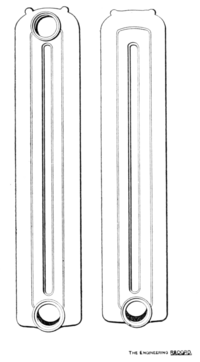tions as long as there is any difference of temperature. This is conduction of heat, and the rate of flow under the same conditions of temperature varies as a factor known as the heat conductivity of the body concerned. The heat conductivity of fluids, liquids and gases is very low, practically zero, but heat is transferred in them by convection. The particles in direct contact with the source of heat are heated above the temperature of the rest, and an increase in temperature of any liquid or gas invariably decreases its specific gravity and causes an upward current of the hot particles, which brings the colder particles in turn in contact with the hot body, thus maintaining a circulation which tends to raise the temperature of the entire mass. Radiation or radiant heat is entirely different from either of these in its action. It is a wave motion and travels through air and all transparent bodies with the velocity of light without heating them, and only appears as sensible heat when its course is interrupted by opaque bodies by which it is absorbed.[1]
- ↑ Some bodies which are quite opaque to light waves are more or less transparent to heat waves, and vice versa, and nothing except the immaterial ether is absolutely transparent to them. The earth's atmosphere absorbs a considerable amount of the radiant heat from the sun.

